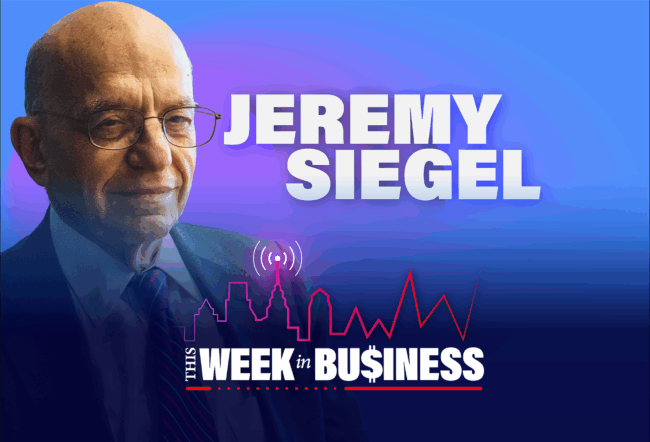Don’t worry about the U.S. economy.
Wharton management professor Iwan Barankay has looked at the data, crunched the numbers, and read the latest research from fellow economists, and he says everything is just fine.
“This is the longest continuous expansion of the economy since the second World War, and we’re not used to that,” he told Wharton Business Daily on SiriusXM. “This is completely new territory, so of course you look for signs that this party can’t go on forever. But as for the data today, we see that after the COVID intermission, so to speak, we are back to the trends that started at the end of the Great Recession, which is really remarkable, and I think a testament to all these government interventions.”
The Bureau of Labor Statistics reported the unemployment rate in November was unchanged at 3.7% and 263,000 jobs were added, with the most gains in health care, hospitality, leisure, and government. The labor market is still tight, with most job seekers easily finding work, and there haven’t been any big spikes up or down in the unemployment or job growth rates since early spring — a sign that the economy is level and steady.
Barankay thinks that’s great news, despite all the negative headlines about layoffs in the tech and finance sectors and rampant speculation about a recession. He reminded news audiences to consider the source when seeing stories about the roughly 4,000 employees laid off at Twitter and 9,000 at Facebook, compared to 153.5 million people employed in the U.S. economy.
“We can talk doom and gloom and the recession when the numbers really indicate it.”— Iwan Barankay
The Bureau of Labor Statistics is “not trying to cater to an audience. They are providing the facts and the numbers,” he said. “When we look at news reports, they really like to focus on high-profile companies because these are headline-grabbing items. We have to think about whether what we see in the news is really reflective of a broader trend. People want to sell the news, and that’s an important lesson here.”
The professor said research shows that the U.S. government’s interventionist policies during the worst of the COVID-19 crisis — including stimulus checks, loans, and mortgage holidays — helped buoy the bottom 50% of wage earners. People with higher incomes saved money during the pandemic through less discretionary spending, but those in the bottom half used the help to maintain consumption, which is good for the overall economy.
‘Ghost in the Attic’
Barankay concedes that the “big ghost in the attic” is inflation. The 12-month inflation rate in the U.S. stood at 7.7% in October. That’s down from a peak of 9.1% in June but still much higher than the near-zero rates in mid-2020.
“Prices are going up. The economy is getting too hot,” he said. “When the federal bank is intervening there, they try to make it more expensive to borrow money. They want to cool investment in companies to take a little bit of the possible ballooning in the economy out of it, make it a little bit cooler, a little bit less intense.”
Yet companies are still hiring despite the rising interest rates. The website Indeed is often used by government agencies as a barometer of the job market, and Barankay pointed out that its plentiful listings in the past year indicate a “high-frequency job posting environment.” That strong job market has led to real wage growth, especially for the bottom 40% of the income distribution. But Barankay warned that growth could erode if the Federal Reserve takes more restrictive action.
“I think if the Fed turns up the interest rate more, this is just going to hurt more of the bottom 40% of the distribution in terms of employment and income,” he said.
“This is the longest continuous expansion of the economy since the second World War, and we’re not used to that.”— Iwan Barankay
When asked about the possibility of a recession, Barankay said economists always worry about the “unknown unknowns.” In the years before the 2008 housing market crash that led to the Great Recession, the unknown at the time was poor regulation of high-risk mortgage debt. Barankay said he doesn’t believe there are similar “skeletons” getting ready to pop out of the economic closet, but he does worry about what is happening globally.
“The big question continues to be how are factors outside the U.S. affecting us,” he said. “When winter gets really hard and we see more disruption to energy supplies, this can become politically more volatile, and it’s unclear to predict how governments may react. The worry here is that governments may do things that speak to populist demand but don’t make a lot of economic sense.”
He said government intervention in energy prices is “very, very distortionary” and sparks market speculation. But again, Barankay said he would rather focus on the facts: The U.S. economy’s outstanding pandemic recovery has built jobs and better wages that are boosting people at the bottom of the income range.
“I hate to say it, but compared to most OECD countries, it is really hard to be poor in the U.S.,” he said. “That we were able to help this segment of the population means that we don’t have millions of people that dropped into poverty or millions of children that perhaps faced food uncertainty. I think this is great success and we should celebrate that. We can talk doom and gloom and the recession when the numbers really indicate it. But at the moment, there’s no indication of that happening right now.”



